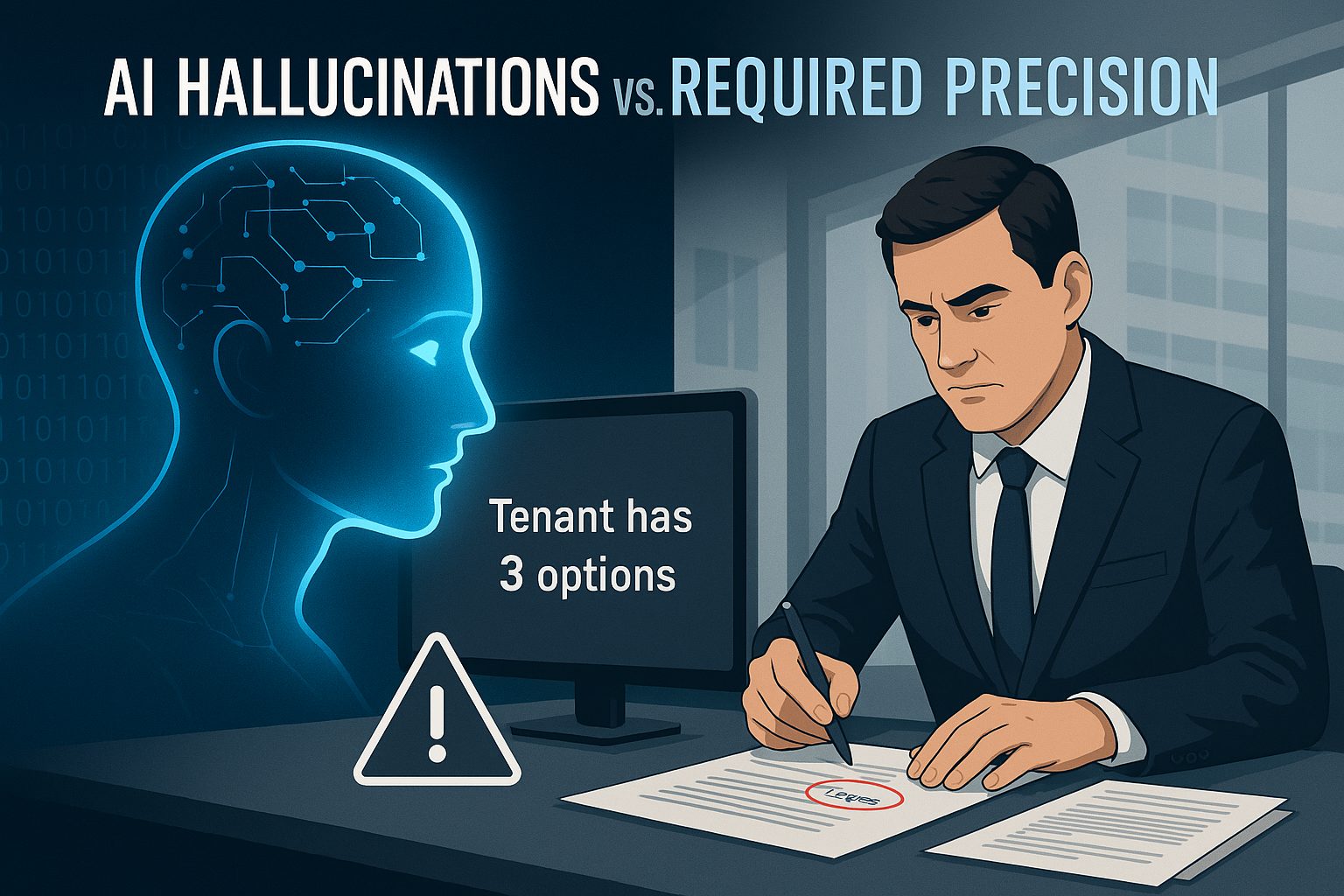Artificial intelligence is changing how we work in commercial real estate, but it’s not without risks. One of the biggest risks? Hallucinations.
These are moments when generative AI literally makes things up, delivering information that sounds accurate but isn’t. And in CRE, where precision is everything, that’s a massive problem. In this post, we unpack what AI hallucinations are, why they happen, and how CRE Agents is working to deliver trustworthy, consistent results from digital coworkers.

What Is an AI Hallucination—and Why It Matters in CRE
Let’s start with a straight definition. AI hallucinations occur when a large language model (LLM) confidently spits out something that sounds right—but isn’t. Maybe it fabricates lease terms. Maybe it invents a sale price. Either way, it’s fiction delivered as fact.
In casual use—say, chatting with ChatGPT about dinner recipes or movie trivia—these mistakes are usually harmless. But commercial real estate isn’t casual. It’s detail-heavy, high-stakes, and precision-oriented. If an LLM wrongly tells you a tenant has three extension options when they only have two, you could mislead a buyer. And that misstep? It could derail the whole deal.
In our world, that kind of error isn’t just a bug. It’s a liability.
Why AI Hallucinates (And How That Affects You)
So why does this happen?
The short answer: LLMs are built to predict—not to know. They’re trained to generate what sounds like the next best word based on a mountain of data. But they don’t “understand” truth the way you or I do.
There are three core reasons why hallucinations show up:
Limited Data Quality: If a model hasn’t seen recent data—or worse, is trained on bad data—it fills in the blanks. Like using DFW office data from 2021 to answer a question about Plano in 2025. You’ll get an answer. It just won’t be right.
Vague Prompts: Ask a model something ambiguous like, “Is this a good tenant?” and it might fabricate a story to sound helpful. Instead, precise prompts anchored in real data drastically reduce risk.
Model Design: LLMs are designed to never say “I don’t know.” They’ll confidently make something up rather than admit ignorance. That’s a feature of their design—not a flaw—but it’s a dangerous one in CRE.
Bottom line: hallucinations aren’t random. They’re the natural byproduct of how these systems are built.
How CRE Agents Handles AI – Without the Fiction
At CRE Agents, we don’t ditch AI—we discipline it.
Instead of tossing open-ended prompts into a black box, we use structured workflows with scoped inputs and defined outputs. We build AI tools that behave more like spreadsheets than chatbots—systematic, repeatable, and auditable.
For example, when generating lease abstracts, we constrain the AI’s freedom to interpret. It can only read from the document you provide. And the output? It follows a predefined format, so you can trace where every data point came from.
We also bake in techniques that reduce hallucinations:
Contextual Grounding: Feed the model the right data upfront—like cap rate comps—so it analyzes, not guesses.
Retrieval-Augmented Generation (RAG): Use external data sources to help the AI cross-check itself.
Human-in-the-Loop (HITL): A fancy term for “check the AI’s work.” A real human always validates final outputs, especially for underwriting and investor reporting.
Is our system perfect? No AI system is. But it’s built for commercial real estate—where “close enough” doesn’t cut it.
The Path Forward: Trust Through Structure
Hallucinations are a deal-breaker in CRE. They waste time. They cause confusion. And left unchecked, they can cost you—or your client—real money.
That’s why CRE Agents is building a different kind of AI experience: one rooted in control, predictability, and traceability. By embedding AI into defined workflows, we’ve dramatically reduced the risk of hallucinated outputs—and made the technology usable in a high-stakes, data-driven environment like ours.
We’re not promising perfection. But we are promising progress. AI has real value in commercial real estate—but only when it’s used with guardrails.
We’re putting those guardrails in place.
Stay tuned! We’ll be rolling out more AI-powered tools built for CRE professionals soon. If you’re on the waitlist, new invites are headed your way. Not yet on the waitlist, join today and be one of the first to get access to digital coworkers for CRE!
